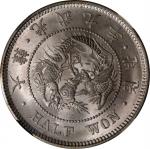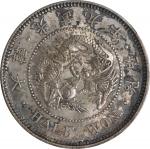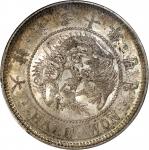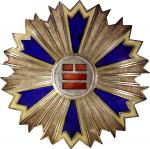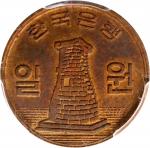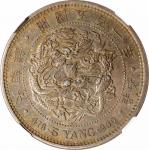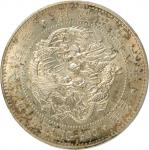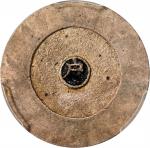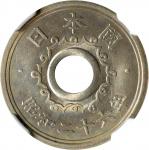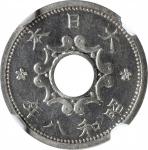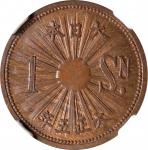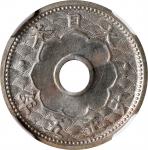大韩光武四年二十圆黄铜质样币。 举世无双的一枚,此枚 俄罗斯 的样币背后蕴藏令人心璋的渊源,常列待收藏项目的前茅。此年份未被 Jacobs 和 Vermeule 收录,仅有光武六年的同版,可见此发行存世寥若晨星。虽然传统上公认此為俄罗斯发行,但对此亦有质疑之声,因為中央设计并非俄罗斯帝鹰,而是韩国鶻。铭文与晚期的日本傀儡银行发行相同,此发行很可能是来自日本而非俄国。 韩国在 1870 年代已落入日本的势力范围,直至 1905 年日本才开始直接管治,并在 1910 年全面吞併。在迈入 20 世纪之际,日本可能引入这些试铸发行,策划扩大对朝鲜半岛的威势影响。正如 Jacobs 和 Vermeule 所指,这些试铸币许多均有流通痕跡,显示它们是故意被放入韩国以作商业流通之用。 此枚珍品币面光滑,细节毕现。高铸处有些许磨损,韩国的 鹰 图上有轻微磨擦。环境损坏所指的凭是小块状的深色泽,但瑕不掩瑜,定必吸引对歷史有兴趣的藏家。此枚版式稀罕,下次面世的机会遥遥无期,值得藏家一掷千金。 <em>这件拍品还包括一张收藏家的笔记,并记录了以下軼事。 Jess Peters 在 Champaign 与 Jacobs 确认过,仅知道有第四年。(在其 J + V 日本硬币书籍中只提到第六年。) Peters 认為它的价值约為 150 美元(截至 1972 年 2 月)[.] 但由於我在 1966 年得到的估价超於此,因此决定再坚持多一段时间。1972 年 2 月 23 日 。</em> KOREA. Brass 20 Won Pattern, Year 4 (1900). Osaka Mint. Kojong (as Emperor). PCGS SPECIMEN Genuine--Environmental Damage, AU Details. KM-Pn32; cf. Jacobs/Vermeule-AC1 (different date). Of the UTMOST RARITY and importance, this incredible example from the exceedingly popular Russian pattern type provides a compelling story that is unlike any other coin. This date is unlisted in Jacobs and Vermeule, though they do list a year 6 (1902) of the same type, highlighting just how elusive these issues are. While traditionally ascribed to Russia as the issuer, this tradition is questionable on grounds that the central design is of not an Imperial Russia eagle, but rather a Korean falcon. With the legends being identical to later Japanese puppet issues, this piece quite likely originates from Japan rather than Russia. Korea had fallen into the Japanese sphere of influence in the 1870s, though more direct Japanese rule would come in 1905, and a full annexation in 1910. It was during the turn of the 20th century that Japan likely introduced these patterns or experimental issues as a trial coinage, with an eye on expanding more direct influence upon the Korean Peninsula. As Jacobs and Vermeule note, many examples of these trial strikes show evidence of circulation, likely indicating they were intentionally passed into the commerce stream in Korea.</p> This example displays a nice, glossy coating to the surfaces, and very exactingly struck details. Wear is seen on the high elements of the design, with the Korean eagle displaying some light rub. The environmental damage designation likely arises from the small patches of dark coloration. Despite these, this example is quite attractive, and certain to appeal to many given the incredible history of the piece. Collectors should have no problem placing very strong bids, given that they may never have another chance to acquire an example of this type and caliber for their collections. </p> <em>This lot also includes a collector pedigree with the following anecdote recorded. Jess Peters checked this with Jacobs, at Champaign, who now knows there is a 4th Year. (Only Year 6 mentioned in his J+V Book on Japanese Coins.) Peters thinks it is worth about $150 (as of February 1972)[.] But as Id been offered more than that in 1966, have decided to hang onto it a while. 23 Feb 1972 .</em></p>

